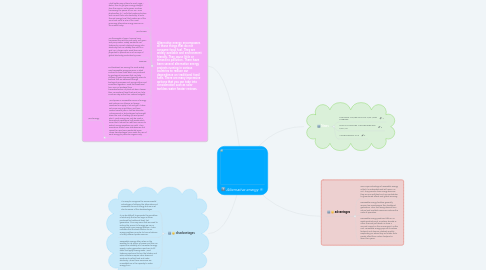Alternative energy
por Dinmukhammed Meyrkhanov


1. Alternative energy encompasses all those things that do not consume fossil fuel. They are widely available and environment friendly. They cause little or almost no pollution. There have been several alternative energy projects running in various countries to reduce our dependence on traditional fossil fuels. There are many impressive options that you can take into consideration such as solar tankless water heater reviews.
1.1. Solar Power
1.2. What better way is there to reach Type I status, than to get your energy straight from the source—solar power involves harnessing the power of our sun. From photovoltaic (PV) cells that capture photons and convert them into electricity, to solar thermal energy (STE) that makes use of the sun’s heat, solar is one of the most promising alternative energy sources on the market today.
1.3. Wind Power
1.4. For thousands of years, humans have harnessed the wind to push sails, mill grain, and pump water. Today, windmills use turbines to convert rotational energy into electricity that can reliably flow into to a grid. On a larger scale, wind farms are projected to provide as much as 20% of global electricity production by 2030.
1.5. Biomass
1.6. and biodiesel are among the most widely used renewable energy sources. In stark contrast to fossil fuels which are produced by geological processes that can take millions of years, biomass typically refers to biofuels that are obtained through biological processes such as agriculture and anaerobic digestion. Fuels like bioethanol from corn or biodiesel from transesterification of plant oils burn cleaner than conventional fossil fuels and can help countries stay within their carbon budgets.
1.7. Wind power is renewable source of energy and reduces our alliance on foreign countries for supply of oil and gas. It does not cause any air pollution and have created several jobs in last few decades. Advancement in technologies has brought down the cost of setting up wind power plant. Wind energy can only be used in areas which experience high winds which mean that it cannot be used as a source to extract energy anywhere on earth. They sometimes create noise disturbances and cannot be used near residential areas. These disadvantages have made the use of wind energy to particular regions only.
1.7.1. Wind energy
